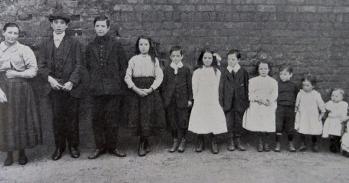
The violence of everyday life in 19th-century Europe – including murder most foul, handsome bandits, wicked women and huge crowds at executions – is being revealed in all its bloody detail by Cambridge University Library.
The violence of everyday life in 19th-century Europe – including murder most foul, handsome bandits, wicked women and huge crowds at executions – is being revealed in all its bloody detail by Cambridge University Library.
This is the literature that was sold in the streets; it took people into a world populated by bandits, sordid criminals and terrible women.
Alison Sinclair
Read all about it! Wrongdoing in Spain and England in the Long Nineteenth Century opens free to the public today (April 30) and reveals a catalogue of criminality from the Library’s remarkable collections of books, broadsides, penny dreadfuls and cheap, mass-produced ephemera.
They reveal how, just like today, tales of crime and punishment were lapped up by a huge cross-section of society in the two countries; from illiterate Spanish peasants who consumed tales of wickedness and evil deeds via rudimentary picture stories to the English middle classes who devoured verbatim court reports from The Times.
The exhibition, opened by Lord Williams of Oystermouth, Master of Magdalene College and former Archbishop of Canterbury, draws on the Library’s vast collection of material from both countries, and runs until December 2013. Themes include: ‘Don’t lock up your daughters’, ‘The glamour of bandits’, and ‘Monstrous criminals’.
Many of the exhibits feature magnificently gruesome, sometimes comically exaggerated, depictions of criminals and their crimes, such as Francisquillo el Sastre (Frankie the Tailor), whose weapon of choice was a gigantic pair of scissors – which, he boasts, were used to cut up the bodies of his victims.
The exhibition also spotlights literature and illustrations of notorious bandits and highwaymen such as Dick Turpin, and savage women like Sebastiana – a woman who killer her parents before removing their hearts and frying them.
Common to both countries was a huge fascination for ‘unnatural women’ – those representing the antithesis of femininity in their abominable deeds.
Professor Alison Sinclair, one of the two curators of the exhibition, who is part-way through a three-year research project looking at wrongdoing in Spain, said: “Why are we fascinated by the wrongs that men and women do? This is the literature that was sold in the streets; it took people into a world populated by bandits, sordid criminals and terrible women.
“Many of the stories share the message that if you stray away from the right path, then a terrible fate will likely befall you. But there is also a strange celebration of wrongdoing, particularly in the case of bandits. Above all, the stories tell us not just about day-to-day life in the street, but about the fantasies people had to distract them from that life.”
The variance in literacy levels between the two countries led to a marked difference of style. Much of the English material is text-based, with a single illustration. But only around one in five Spaniards could read in the mid-19th century, so the material produced for this audience is often more visually arresting, telling stories in pictures with many fewer words.
Vanessa Lacey, curator of the English material, said “Victorian Britain had a huge crime problem and that is absolutely reflected in the popular literature of the time; bar brawls that turned into stabbings in the street are common. The scourge of alcohol is a recurring feature in the heinous crimes depicted.
“There is a serious social history element to the collections. They show how society was divided and how poverty could lead to crime. The streets could be incredibly dangerous. We also have posters advertising or reporting from executions, which could be attended by thirty to fifty thousand people at a time. These aren’t just Dickensian characters; these are real people, real lives.”
One of Lacey’s favourite items is the account of Florence Maybrick, an American national who was sentenced to death for allegedly poisoning her husband. Her sentence was reduced to life imprisonment following a public outcry; released after fifteen years, she chronicled the appalling conditions for inmates in a book that laid bare the horrors of prison life and did much to inform the growing clamour for penal reform.
Both Sinclair and Lacey are at pains to point out the importance of the collections to the national heritages of Britain, Spain and Europe as a whole.
As part of the exhibition and Professor Sinclair’s ongoing research, all the Spanish material on display and selected English items, including Florence Maybrick’s account, are being made available on the Cambridge Digital Library where they will sit alongside the works of Darwin and Newton.
The physical display is accompanied by a virtual exhibition giving additional information about selected exhibits, and images of all the items on display: https://exhibitions.lib.cam.ac.uk/
Sinclair summarized the significance of what is being put on display: “The items on show in the exhibition are a window onto 19th-century life and the things people read and looked at to entertain them. It’s also a timeline of the beginnings of criminology, psychiatry, phrenology and theories of heredity. These are incredibly important collections.”
This work is licensed under a Creative Commons Licence. If you use this content on your site please link back to this page.





